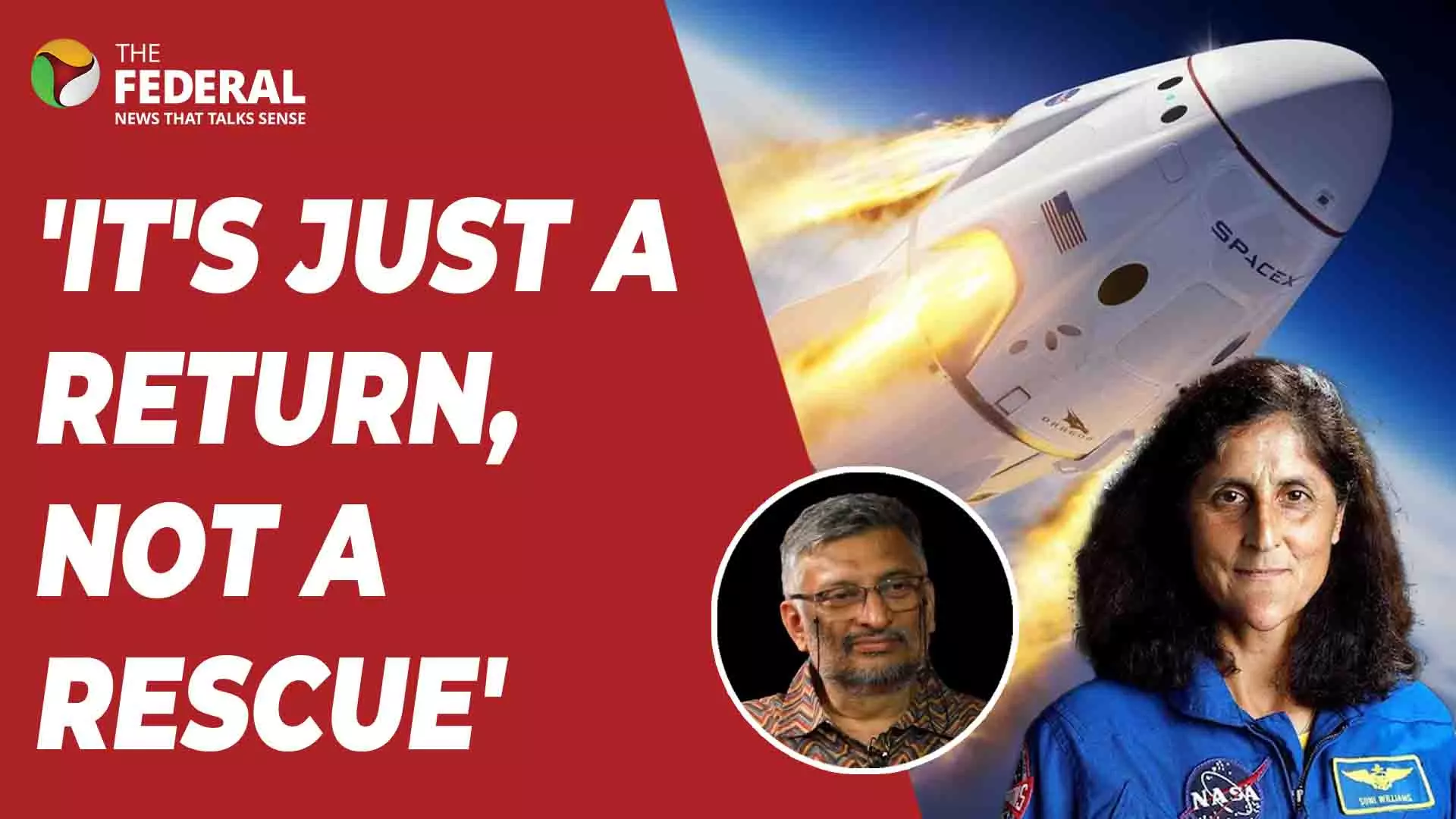
NASA Live | Sunita Williams’ return isn’t a rescue mission: Expert
Astronauts Sunita Williams and Butch Wilmore are finally on their way home after spending 282 days in space instead of the planned eight

NASA astronauts Sunita Williams and Butch Wilmore are finally on their way back to Earth after spending 282 days aboard the International Space Station (ISS)—far beyond their originally planned eight-day mission.
Their extended stay has sparked widespread discussion, with narratives ranging from technical failures to political influence. But was their return really delayed due to a lack of transport, or is there more to the story?
Mission gone wrong
Williams and Wilmore were sent to the ISS on Boeing’s Starliner spacecraft on June 2024. However, technical issues, including thruster malfunctions and a helium leak, left the spacecraft unusable for return. Despite the challenges, experts clarify that they were never "stranded" in space, as there were other means to bring them back at any time.
Professor TV Venkateswaran explains, “The idea that a rescue mission was needed is incorrect. There were backup return options, including Crew 9 and Soyuz MS-26, that were always available at the ISS.”
Politics and media hype
The prolonged stay of the astronauts has gained unusual attention, especially in the media. According to Prof. Venkateswaran, much of the narrative surrounding their "rescue" was influenced by US political dynamics, particularly in the context of rivalry between Boeing and SpaceX.
"During the American elections, there were exaggerated narratives, suggesting Williams and Wilmore were abandoned in space. However, NASA had already arranged an alternative return plan,” he said.
During his campaign, US President Donald Trump even used the delay to push his political messaging, suggesting he would have personally ensured their swift return.
Boeing vs SpaceX: The bigger picture
NASA has relied on the Soyuz spacecraft since 2011, when the space shuttle programme ended. Later, contracts were given to SpaceX and Boeing to develop alternatives. While SpaceX’s Crew Dragon has proven reliable, Boeing’s Starliner has faced repeated delays and failures.
"Boeing’s Starliner has serious reliability concerns. After helium leaks and thruster issues, trust in the spacecraft for future missions is questionable,” said Prof. Venkateswaran.
Now, SpaceX remains the primary US option for human spaceflight, a fact that further fuels political and corporate rivalries in the space industry.
Health challenges after space travel
After spending nearly 300 days in microgravity, astronauts face significant physical adjustments upon returning to Earth. The lack of gravity weakens muscles, particularly in the legs, and can cause temporary balance issues.
"It’s like spending hours in water—when you step out, your body feels heavier. Astronauts must recondition their bodies over a few days to a week,” explained Prof. Venkateswaran.
Despite these challenges, Williams and Wilmore are expected to recover fully with standard rehabilitation protocols.
What does this mean for future missions?
The failure of Boeing’s Starliner raises concerns about the reliability of new space vehicles, especially as NASA prepares for deep-space missions to the Moon and Mars. SpaceX currently dominates the sector, but reliance on a single company could pose risks in the long run.
The return of Williams and Wilmore highlights technical flaws, political manoeuvring, and media misrepresentation in spaceflight. With Boeing’s credibility in question, the US space programme must now decide how to balance competition, reliability, and political influence in future missions.
The content above has been generated using a fine-tuned AI model. To ensure accuracy, quality, and editorial integrity, we employ a Human-In-The-Loop (HITL) process. While AI assists in creating the initial draft, our experienced editorial team carefully reviews, edits, and refines the content before publication. At The Federal, we combine the efficiency of AI with the expertise of human editors to deliver reliable and insightful journalism.

